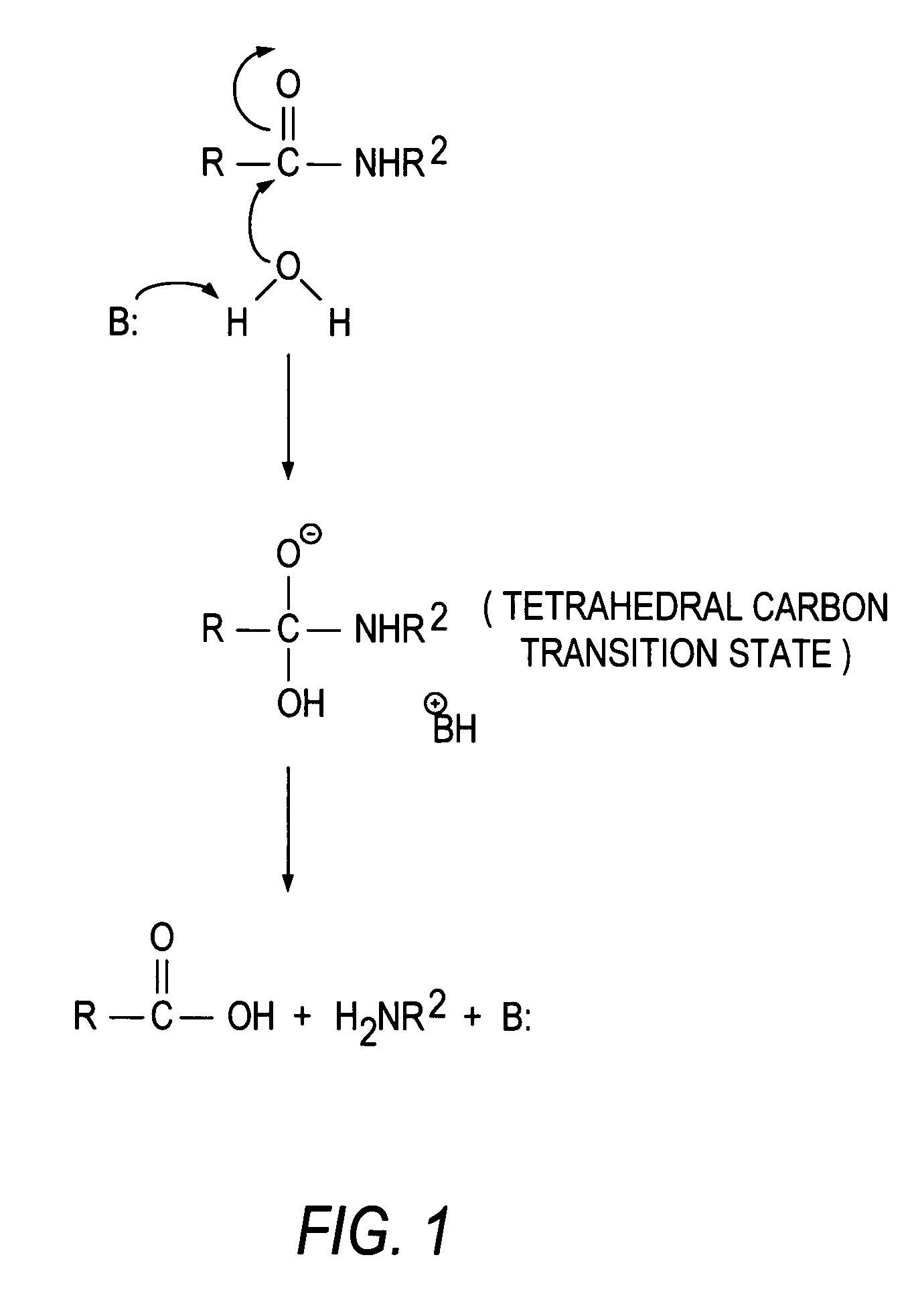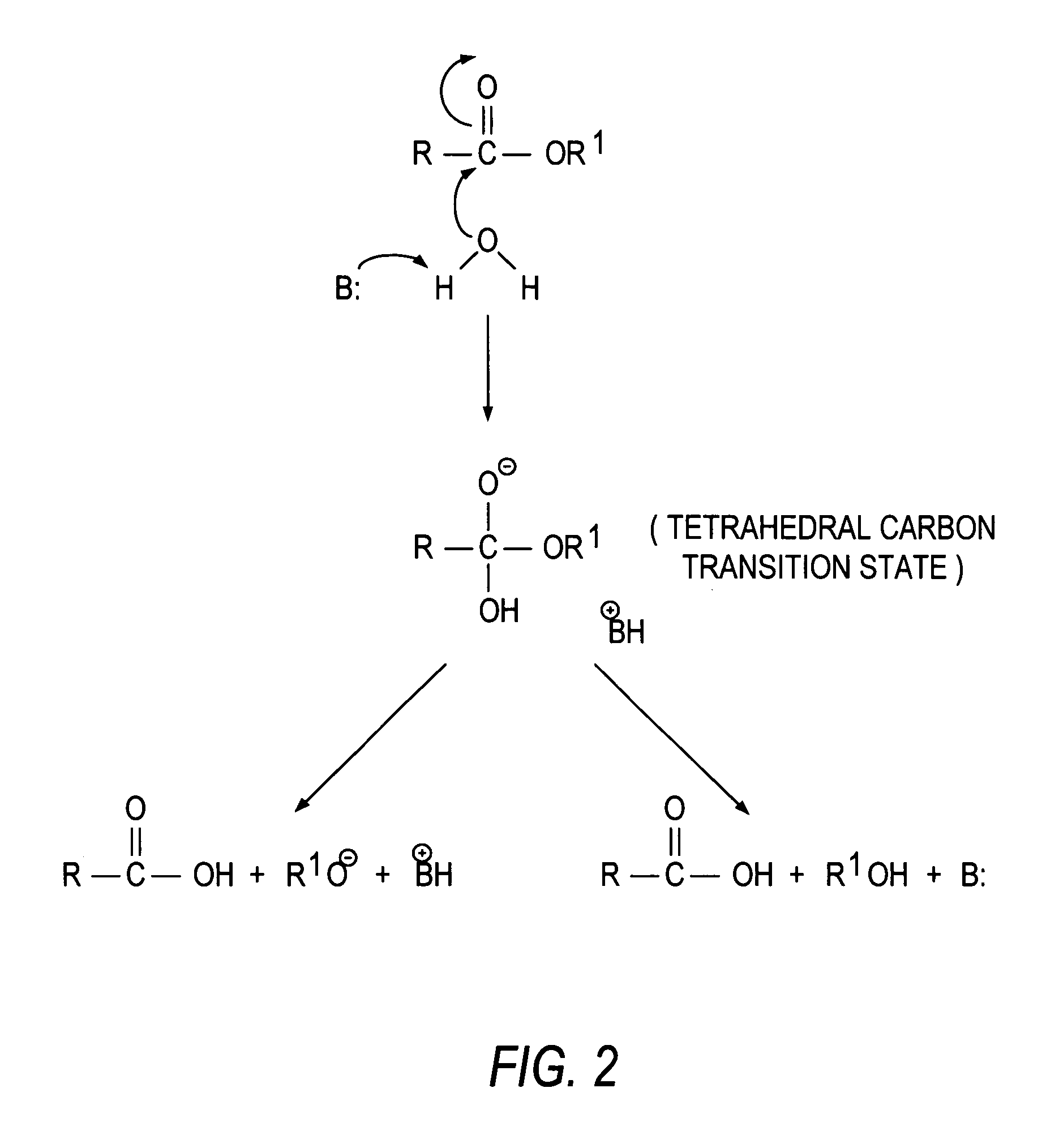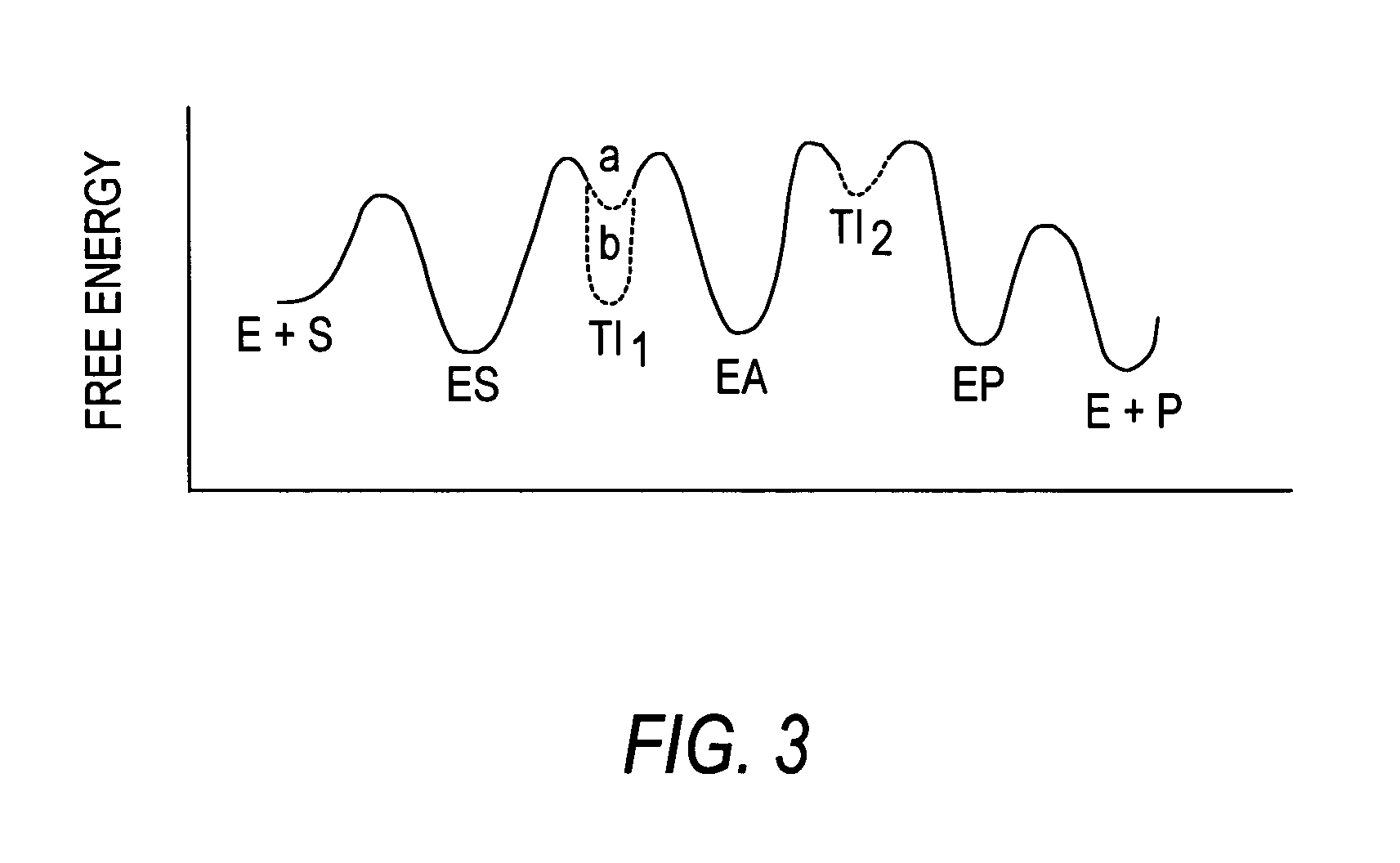Transition state analogs
a technology of transition state and analogy, which is applied in the field of antibodies, antigens, haptens and immunogens, can solve the problems of insufficient structure of haptens disclosed in tramontano, important differences between antibodies and enzymes, and high process cost, so as to maximize the stabilization of the hydrolytic transition state and enhance the hydrolytic rate
- Summary
- Abstract
- Description
- Claims
- Application Information
AI Technical Summary
Benefits of technology
Problems solved by technology
Method used
Image
Examples
example 1
Synthesis of Aminomethanesulfonamidylalanyl Acid
[0182]The reaction sequence is shown in FIG. 12.
Preparation of Silver Salt of N(-Benzyloxycarbonyl)glycine (I)
[0183]2.09 g (10 mmol) of N(-benzyloxycarbonyl) glycine is dissolved in 16.8 ml of 5% sodium hydrogen carbonate. After removing the carbon dioxide by evacuation (two minutes on rotavapor) 1.70 g (10 mmol) of AgNO3 in 15 ml water is added to the above stirred solution in the dark. After 15 minutes the white precipitated material is filtered at 10° C., washed with ice water, acetone and anhydrous CCl4. The salt is dried over P2O5 and Mg2SO4 in vacuum at 45° C. for 24 hrs. Yield 82%.
Preparation of 1-Bromo, 1-N-Benzyloxycarbonylmethane (II)
[0184]3.16 g (10 mmol) silver salt of N(-benzyloxycarbonyl) glycine (I) is stirred with 50 ml of CCl4 in a flame-dried, round-bottomed flask under dry nitrogen. At 35–40° C., 20 ml CCl4 solution of 12.5 mmol bromine is added dropwise over 5 minutes. The mixture is allowed to cool to room temperat...
example 2
Synthesis of 3-(Aminomethyldihydroxysilyl) Propionic Acid
[0189]The reaction sequence is shown in FIG. 14.
Preparation of 3-(Trichlorosilyl) Propionic Acid Benzyl Ester (I)
[0190]A mixture of 244 g (1.5 moles) of vinyl benzyl ester, 203 g (1.5 moles) of trichlorosilane and 0.5 ml of 0.1 molar alcoholic chloroplatinic acid (5×10−5 mole) is refluxed for 24 hours. During this period the temperature of the refluxing mixture increases. The mixture is then distilled through a 22 mm×4 ft. Podbielniak column packed with Heli-pak to give 3-(trichlorosilyl) propionic acid benzyl ester (I).
Preparation of 3-(Dichloronitromethylsilyl) Propionic Acid Benzyl Ester (II)
[0191]298 g (1 mole) of 3-(trichlorosilyl) propionic acid benzyl ester (I) is dissolved in 540 ml (10 mol) of nitromethane and cooled to 0° C. Added dropwise 139 ml (1 mol) of triethylamine over a period of 2 hours. The mixture is then distilled through a 22 mm×4 ft. Podbielniak column packed with Heli-pak to give 3-(dichloronitromethyl...
example 3
Synthesis of (S)-Lactate-1-(R)-Amino-2-Phenylethane Boronate
[0193]The reaction sequence is shown in FIG. 15.
Preparation of (+)-Pinanediol (R)-1-Benzyloxycarbonylamino-2-phenylethane Boronate (IV)
[0194]Lithium diisopropylamide (12 mmol)) in hexane is fluidized with a little THF and added dropwise to 0.27 g (10 mmol) of (+)-pinanediolbenzylboronate (I) (Bp 108° C. (0.1 torr), [α]D22+31.30° (c18, toluene) and 1 ml dichloromethane in 10 ml dimethoxyethane at −78° C. After 1 hr. at 0° C. the mixture is cooled to −78° C. and lithiohexamethyldisilizane (10 mmol) in THF is added. This mixture is kept overnight at 20° C. After cooling to −78° C. 7.47 g (30 mmol) of N-(benzyloxycarbonyloxy) succinimide and 0.77 ml (10 mmol) of CF3CO2H are added. The reaction is kept at 20° C. for 15 hrs. and then isolated by chromotography, using silica gel and eluting with ether, and recrystallized three times with CH2Cl2 to give (+)-pinanediol (R)-1-benzyloxycarbonylamino-2-phenylethane boronate (IV).
Prepar...
PUM
| Property | Measurement | Unit |
|---|---|---|
| ionic strength | aaaaa | aaaaa |
| ionic strength | aaaaa | aaaaa |
| ionic strength | aaaaa | aaaaa |
Abstract
Description
Claims
Application Information
 Login to View More
Login to View More - R&D
- Intellectual Property
- Life Sciences
- Materials
- Tech Scout
- Unparalleled Data Quality
- Higher Quality Content
- 60% Fewer Hallucinations
Browse by: Latest US Patents, China's latest patents, Technical Efficacy Thesaurus, Application Domain, Technology Topic, Popular Technical Reports.
© 2025 PatSnap. All rights reserved.Legal|Privacy policy|Modern Slavery Act Transparency Statement|Sitemap|About US| Contact US: help@patsnap.com



